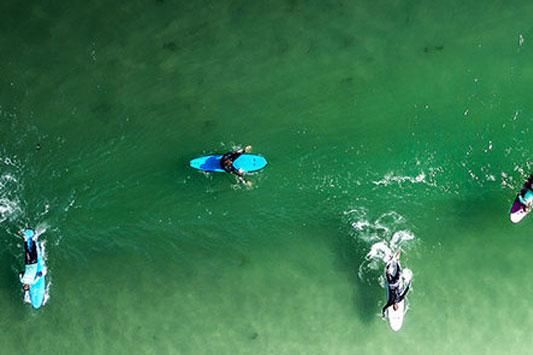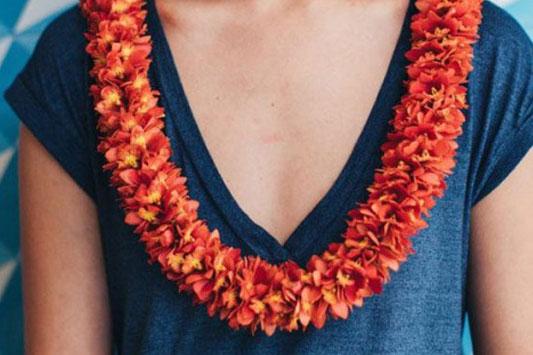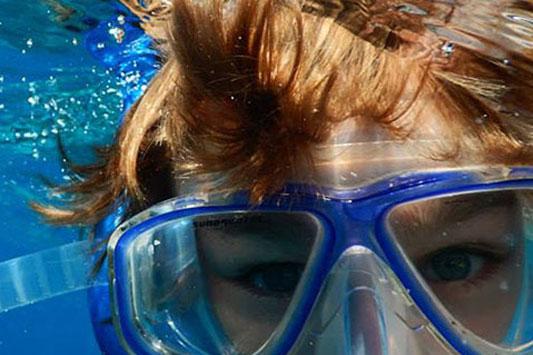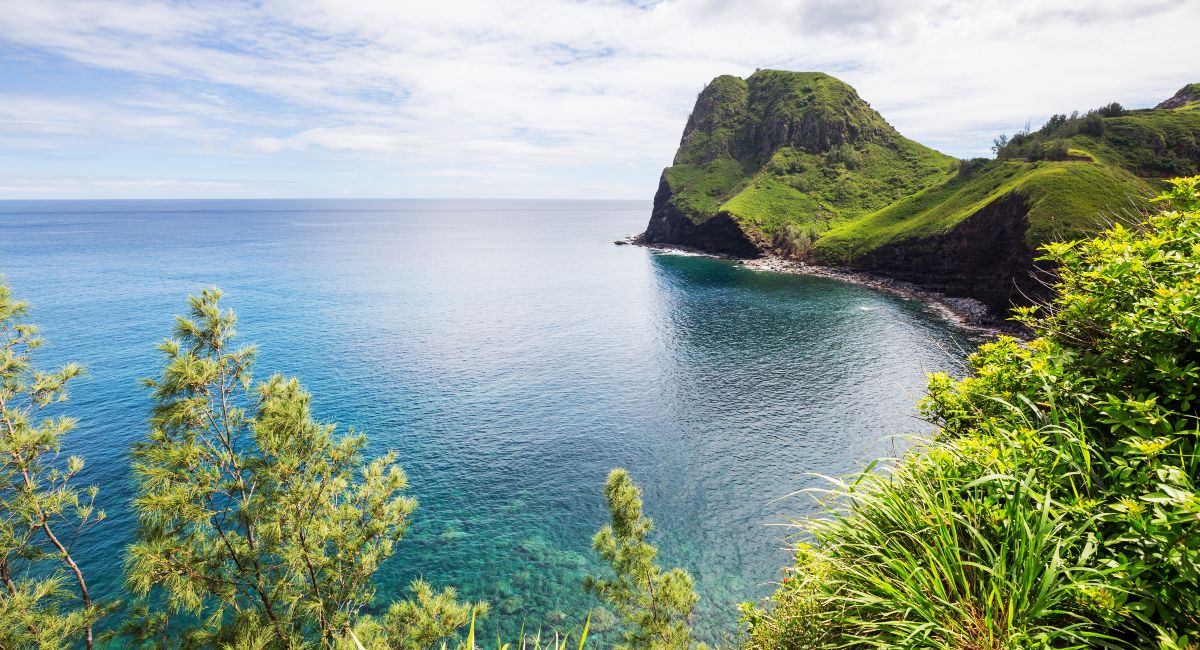
The Ultimate 7-Day Maui Vacation Itinerary: How to Spend a Week in Paradise
Update. June 30, 2025
Estimated reading time: 15 minutes
A perfect 7-day Maui itinerary includes sunrise at Haleakalā National Park, cultural exploration at Iao Valley, snorkeling in West Maui, the legendary Road to Hana adventure, relaxation at pristine beaches, and authentic Hawaiian luau experiences. Advance reservations are required for Haleakalā sunrise viewing and Iao Valley State Monument. Despite ongoing recovery from the 2023 wildfires, Maui welcomed 2.12 million visitors through November 2024, demonstrating the island’s resilient tourism industry and continued appeal as Hawaii’s premier vacation destination.
Discover the “Valley Isle” – Maui, where natural beauty, rich culture, and adventurous activities converge. This Maui vacation itinerary leads you through lush landscapes, pristine Maui beaches, and cultural richness, embodying the island’s Aloha spirit. Prepare for a journey that captures the essence of Hawaiian paradise.
Where Should You Stay in Maui for Easy Access to All Activities?
Choose West Maui (Kaanapali/Lahaina area) for beach access and resort amenities, or South Maui (Kihei/Wailea) for central location and diverse accommodation options ranging from budget-friendly condos to luxury resorts.
Kaanapali and the West Side
As Lahaina recovers from the wildfires, some areas may still be restricted. However, its neighboring areas in West Maui have reopened. These regions have many restaurants, bars, shops, and historical sites, blending modern entertainment with historical charm. North of Lahaina town, Kaanapali beckons with its picturesque beaches and luxury resorts, offering an idyllic retreat for visitors.
Kihei/Wailea (South Maui)
South Maui, including Kihei and Wailea, is known for its golden-sand beaches, beautiful snorkeling spots, and various dining and shopping options. Kihei is more budget-friendly, with mostly condo accommodations, while Wailea offers upscale resorts and luxury shopping. This region’s central location makes it ideal for exploring the rest of the island.
When planning your trip, consider these areas for a balanced experience of Maui’s diverse landscapes, attractions, and community life. Remember to respect local guidelines and recovery efforts while enjoying your stay on this beautiful island.
At Maui Paradise Properties, we offer some of the best Maui vacation rentals in West and South Maui, with over 300 properties ranging from oceanfront Kaanapali condos to luxury Wailea accommodations. Book directly and save up to 15% while supporting Maui’s local tourism economy.
What Should You Do on Your First Day in Maui?
Use arrival day for gentle acclimatization by settling into your accommodation, exploring your immediate area, enjoying sunset beach walks, and experiencing authentic Hawaiian dining to ease into island time.
In most cases, you’ll arrive on Maui in the afternoon or evening, ready for rest after a long day of travel. As you land on Maui, take the day to adjust to the island vibes.
After settling into your accommodation, resist the urge to immediately hit every visitor spot, trust me on this one. Instead, grab a shave ice from a local stand, find a quiet stretch of beach, and watch your first Maui sunset. There’s something magical about that first golden hour that sets the tone for your entire trip.
How Do You Experience Haleakalā Sunrise (Day 2)?

Haleakalā sunrise requires advance reservations through Recreation.gov for vehicles entering 3-7 AM, with the dormant volcano offering breathtaking views at 10,023 feet elevation above the clouds.
Jet lag will either keep you awake or ensure you’re up early. Use this opportunity to experience the magic of Haleakalā, Maui’s majestic dormant volcano. Witness a breathtaking sunrise above the clouds, a moment that transcends the ordinary. Spend the rest of the day exploring the park’s diverse landscapes, from its lunar-like summit to its lush lower slopes, making this a highlight of your Maui travel experience.
Pro tip: We recommend packing a thermos of coffee (plus points if it’s local like the coffee from Maui Coffee Roasters) and wear cozy layers. Sunrise from the summit can get surprisingly chilly, but it’s an unforgettable experience.
IMPORTANT: Reservations are required for sunrise viewing. Book advance reservations at Recreation.gov up to 60 days ahead for $1 per vehicle. Entry is required between 3:00 AM – 7:00 AM. Don’t forget to pack warm clothing (temperatures drop to 40-50°F) and snacks to enhance your exploration experience.
What’s the Best Way to Experience Haleakalā Sunrise?
Haleakalā sunrise requires reservations through Recreation.gov and an early 3 AM departure, but rewards visitors with breathtaking views above clouds at 10,023 feet elevation on Maui’s dormant volcano.
RESERVATION REQUIRED: Since 2021, sunrise viewing at Haleakalā requires advance reservations for all vehicles entering between 3:00 AM and 7:00 AM. Book up to 60 days in advance at Recreation.gov for $1 per vehicle, and arrive 30 minutes before sunrise for optimal viewing positions.
What’s Special About Iao Valley and How Do You Visit (Day 3)?
Iao Valley State Monument showcases the iconic 1,200-foot Iao Needle and sacred Hawaiian history, but requires advance reservations for out-of-state visitors since May 2023 to manage overcrowding.
- Morning: Start your day off with a trip to the Iao Valley State Monument, a lush historical landmark. Explore the Ethnobotanical Loop and trek up the Iao Needle Lookout Trail.
RESERVATION REQUIRED: Out-of-state visitors must book advance reservations at gostateparks.hawaii.gov up to 30 days ahead. Entry costs $5 per person plus a $10 vehicle parking fee. This sacred valley is the site of the 1790 Battle of Kepaniwai, where King Kamehameha I unified the Hawaiian Islands.
- Lunch:
Check out the local food trucks serving plate lunch, a favorite for locals and visitors alike. Get the katsu or kalua pork, and don’t forget to try the mac salad (it’s a Hawaii thing, and yes, it goes with everything) - Afternoon: Spend the remainder of your day exploring the charming town of Wailuku, immersing yourself in local history and culture.
How Can You Best Explore West Maui’s Hidden Gems (Day 4)?
West Maui offers world-class snorkeling at Olowalu’s coral gardens, famous pie tastings at Leoda’s Kitchen, pristine Kaanapali Beach relaxation, and craft beer experiences at Maui Brewing Company.
- Morning: Wake up early and embark on a scenic drive along the picturesque Honoapiilani Highway (Hwy 30).
- Snorkeling: Visit Olowalu Beach, known for its incredible coral gardens. Bring or rent snorkel gear and swim alongside turtles and tropical fish.
Pro tip: If you’re coming from West Maui, once you see the Camp Olowalu sign on the (makai) waterside, get ready to safely pull over and park. When snorkeling, always give our honu (turtle) friends plenty of space. They’re more curious when you’re not chasing them around with your GoPro!
- Lunch: Head to Leoda’s Kitchen and Pie Shop for a delightful meal. Their sandwiches and famous pies, like the Banana Cream or Coconut Cream, are a must-try.
- Afternoon: Continue to Kaanapali Beach for an afternoon of relaxation on its white sandy shores and turquoise waters, with the iconic Black Rock providing a dramatic backdrop.
- Evening: If you’re a craft beer enthusiast, don’t miss the chance to visit Maui Brewing Co. Indulge in their unique brews like the coconut porter.
Why Is the Road to Hana Called a Must-Do Experience (Day 5)?
The Road to Hana features 64 miles of winding roads with 620 curves and 59 bridges through rainforests, waterfalls, black sand beaches, and tropical pools, requiring a full day with early departure and flexible planning.
- Morning: An early start to embark on the iconic Road to Hana. This all-day journey takes you through rainforests, waterfalls, and breathtaking seascapes.
- Activities: The Road to Hana is about the journey, plan for plenty of time on the road and exploring, and pack your aloha for the drive. Map your top spots in advance, but save room for random adventures you may come across. Pack trail mix and spam musubi (grab them from any local store), and remember: sandals are your enemy on wet rocks – trust me on this one.
- Tip: Visit within three days of your Haleakala summit trip to use the same entrance fee for the Kipahulu region.
Planning Essentials: Start before 7 AM, pack water and snacks, fill gas tank, and expect 10-12 hours round trip. Drive slowly and pull over safely to let others pass—this embodies the aloha spirit.
What Should You Do for Rest and Cultural Immersion (Day 6)?
- Day six balances relaxation after Road to Hana intensity with authentic Hawaiian cultural experiences through traditional luau celebrations featuring local foods, music, and storytelling.
- Morning: Your body will thank you for this slower pace after yesterday’s adventure. This is when I love to find a quiet spot with my morning coffee and actually read that book I’ve been carrying around. If you’re staying oceanfront, embrace the sounds of the calming waves; it’s like you have your own built-in sound machine.
- Evening Luau: Experience a traditional Hawaiian luau, complete with Pacific Island dances, storytelling, and a feast featuring kalua pig, poi, fresh seafood, and tropical fruits.
How Should You Spend Your Final Day in Maui (Day 7)?
The final day should blend relaxation with any missed experiences, souvenir shopping at local markets, and revisiting favorite spots while allowing adequate time for airport departure.
- Morning: This is always the hardest part for me – that last morning when you realize you have to leave paradise. Take a slow walk along your favorite beach from the week, and soak in those last moments of island time.
- Departure: Depending on your flight, explore or revisit favorite spots before saying aloha to Maui.
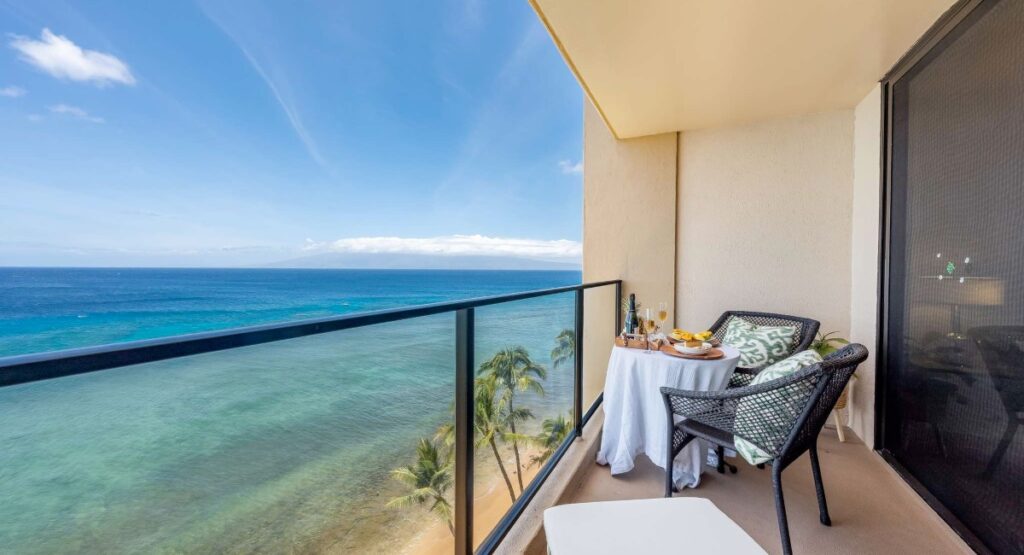
What Vacation Rental Options Work Best for a 7-Day Stay?
Maui Paradise Properties offers over 300 vacation rentals across West and South Maui, from oceanfront Kaanapali condos to luxury Wailea properties, with direct booking savings up to 15% and local expertise.
Your accommodation choice significantly impacts your Maui experience. We proudly provide the island’s largest selection of vacation rentals, offering authentic local hospitality combined with modern amenities.
West Maui Options:
- Kaanapali condos with resort amenities and beach access
- Napili/Kahana properties for intimate sunset views
- Family-friendly complexes with pools and recreational facilities
South Maui Options:
- Budget-friendly Kihei condos with local charm
- Luxury Wailea accommodations near world-class resorts
- Central locations are ideal for island-wide exploration
Booking Benefits:
- Save up to 15% by booking directly
- Local ownership and personalized service
- Complimentary activity packages
- 24/7 guest support
What Dining Experiences Should You Prioritize on Maui?
Maui’s culinary scene combines global influences with local traditions, featuring fresh seafood, traditional Hawaiian fare like kalua pork, farm-to-table restaurants, and casual beachside dining from food trucks to upscale establishments.
Maui’s culinary scene is a delightful fusion of global influences and local traditions. Explore the island’s dining landscape, from upscale restaurants to casual seaside grills, and savor local dishes like fresh seafood and traditional Hawaiian fare like Kalua pork.
Where Can You Find the Best Shopping on Maui?
Maui shopping includes authentic Hawaiian products at local artisan markets, unique crafts in boutique stores, and specialty items at places like Whalers Village, with an emphasis on supporting local artists and businesses.
Shopping in Maui offers an array of unique souvenirs, local crafts, and authentic Hawaiian products. Explore artisan markets and local boutiques to find unique items that capture the island’s spirit. By supporting local artists and stores, you contribute to keeping the economy thriving and ensuring the vibrancy of Maui’s unique community.
What Nightlife Options Exist on Maui?
Maui’s nightlife ranges from live Hawaiian music venues and craft brewery experiences to family-friendly beach activities and sunset celebrations, offering diverse evening entertainment options.
As the sun sets, Maui’s nightlife awakens. Enjoy live music, visit dynamic bars, or indulge in family-friendly activities. The island’s evenings are as diverse and vibrant as its days.
How Should You Navigate Transportation Around Maui?
Rental cars offer maximum flexibility for exploring Maui’s diverse attractions, while public buses serve major areas like Kaanapali and Kihei, though cars are essential for destinations like the Road to Hana.
Here’s the real talk about getting around Maui – you’ll want a car. I’ve tried the bus route, and while it’s a nice way to save money, you’ll miss out on those spontaneous stops that make Maui magical. Plus, getting to Haleakalā at 3 AM on public transport is not something you can do.
If covering all corners of Maui is on your mind, or your stay is in a remote region, you’re better off renting a car. If you plan on staying only on the West Side, the bus is a great option since there are several routes that go through Kaanapali and Kihei.
Keep in mind that Maui is not as densely populated as Oahu, so public transportation may not be as efficient. Plan ahead for delays and/or frequent stops.
Remember that local buses may not go through some popular tourist attractions. Renting a car is your best bet to get around Maui if you’re short on time or are planning to explore the island extensively.
If you find yourself somewhere in between, renting a car for only part of your trip can be a good idea, too. Check out our guide to driving in Maui for more insights about driving on the island.
When Is the Best Time to Visit Maui in 2025-2026?
Maui enjoys year-round pleasant weather, but shoulder seasons (April-June and September-November) offer fewer crowds and moderate prices, while avoiding peak summer and winter tourist periods.
Maui’s pleasant weather year-round makes any season ideal for a visit.
However, shoulder spring seasons (April to mid-June) and fall (September to November) offer fewer crowds than peak summer and winter, allowing you to explore the island freely.
Be prepared to see more rainfall in November and December, as they are also the wettest months in Hawaii.
2025 Visitor Trends: According to Hawaii Tourism Authority data, Maui continues recovering strongly from 2023 wildfires, with November 2024 showing 21.6% growth in visitor arrivals, indicating improved accessibility and experiences.
What Should First-Time Maui Visitors Know?
Essential tips include advance reservations for popular attractions, reef-safe sunscreen requirements, warm clothing for high elevations, rental car necessity, and whale watching season timing from December through mid-April.
For those new to Maui, essential tips range from safety precautions to health considerations. Be informed to ensure a smooth, enjoyable, and safe Maui vacation. Here are some top tips if you are traveling to Maui for the first time:
- Peak Times to Visit: Figure out the best time to visit. Peak tourist months are Summer and Winter. If you prefer to see Maui with fewer crowds or want to see the island’s beauty for yourself, consider visiting during the shoulder months.
- Appropriate Gear: If you plan to spend time atop Haleakala, you’ll want to bring something to keep you warm. Summer wear won’t be enough when the temperature drops low up there.
- Whale Migration Times: Maui is the best Hawaiian island for whale watching, but keep in mind that whale watching season in Maui is only from December through mid-April.
- Pack Light: Maui’s laid-back lifestyle calls for casual, comfortable clothing and essentials like sunscreen, slippers, and hats. Make sure to buy only reef-safe sunscreens before your flight, as regular sunscreens are banned in Hawaii because of their damaging effects on local coral reefs.
- Car Rentals: A rental car is highly recommended for exploring the island at your own pace. You can opt for local car rentals in Maui, like Kihei Rent-A-Car, Maui Car Rentals, Makoa Rental Car Maui, or national brands like Enterprise Rent-A-Car. Renting from local rental car companies in Maui supports local businesses. Still, a national chain may give you more peace of mind.
How Does Maui Cater to Different Types of Travelers?
Maui accommodates solo adventurers, families, couples, and luxury travelers through diverse activities ranging from adventure sports and cultural experiences to romantic resorts and family-friendly beaches.
Maui caters to all types of travelers, from solo adventurers to families. The island’s diverse range of activities and attractions ensures a personalized experience for every visitor. It is also famous for being a romantic vacation spot for couples.
How Can You Practice Responsible Tourism on Maui?
Responsible tourism in Maui involves supporting local businesses, using reef-safe sunscreen, carrying reusable water bottles, respecting wildlife, and following Leave No Trace principles to preserve the island’s sensitive ecosystem.
As a visitor, participate in responsible tourism practices when you’re visiting Maui. The island has a sensitive ecosystem. Support local businesses and respect the island’s environment to preserve Maui’s beauty for future generations.
Reduce your footprint by bringing only what you need, carrying a reusable water bottle, wearing reef-safe sunscreen, and picking up trash on the beach or in the ocean. It’s also advised to steer clear of any wildlife. Check the advisory on responsible viewing before you visit.
Experience the Magic of Maui
This 7-day Maui itinerary offers a comprehensive and enriching exploration of the island’s beauty, culture, and adventure. We hope our sample itinerary inspires you own and that you make the most of your trip to Maui. From the awe-inspiring Haleakala sunrise to the serene beaches of Wailea, discover the enchanting allure of Maui and create lasting memories on this island paradise.
Ready to book your perfect Maui vacation? Browse our complete selection of Maui vacation rentals and save up to 15% by booking directly with Maui Paradise Properties, your trusted local vacation rental experts.
Common Questions People Ask About Maui
Do I need reservations for Haleakalā and Iao Valley?
Yes, both require advance reservations. Haleakalā sunrise viewing requires reservations for vehicles entering 3 AM-7 AM (book up to 60 days ahead). Iao Valley State Monument requires reservations for out-of-state visitors (book up to 30 days ahead).
How much should I budget for a 7-day Maui vacation?
Budget varies widely by accommodation and activities. Vacation rental stays average $200-500/night, dining $50-150/day per person, activities $50-200 per experience, and car rental $40-80/day. Total for couples: $3,000-7,000 for the week.
Is Maui safe to visit after the 2023 wildfires?
Yes, most of Maui remains safe and open. According to DBEDT 2024 reports, Maui welcomed over 2.1 million visitors through November 2024. West Maui (except Lahaina town) reopened to tourism in November 2023. Always check current conditions before traveling.
What should I pack for a week on Maui?
Essentials include reef-safe sunscreen (required by Hawaii law), lightweight clothing, swimwear, comfortable walking shoes, a light jacket for Haleakalā (temperatures drop to 40-50°F), a reusable water bottle, and snorkel gear if you prefer your own equipment.
How can I experience authentic Hawaiian culture on Maui?
To immerse yourself in authentic Hawaiian culture in Maui, participate in a traditional luau, visit the Olowalu Petroglyphs, and explore the Maui Ocean Center. Sampling local Hawaiian cuisine, attending cultural workshops, and seeing the Iao Valley are great ways to experience the island’s rich heritage.
Can I do the Road to Hana in one day?
Yes, but plan for 10-12 hours total. Start before 7 AM, pack food and water, fill up your gas tank, and prepare for 620 curves and 59 bridges. Consider staying overnight in Hana for a more relaxed experience or taking a guided tour.
- Where Should You Stay in Maui for Easy Access to All Activities?
- What Should You Do on Your First Day in Maui?
- How Do You Experience Haleakalā Sunrise (Day 2)?
- What’s the Best Way to Experience Haleakalā Sunrise?
- What’s Special About Iao Valley and How Do You Visit (Day 3)?
- How Can You Best Explore West Maui’s Hidden Gems (Day 4)?
- Why Is the Road to Hana Called a Must-Do Experience (Day 5)?
- What Should You Do for Rest and Cultural Immersion (Day 6)?
- How Should You Spend Your Final Day in Maui (Day 7)?
- What Vacation Rental Options Work Best for a 7-Day Stay?
- What Dining Experiences Should You Prioritize on Maui?
- Where Can You Find the Best Shopping on Maui?
- What Nightlife Options Exist on Maui?
- How Should You Navigate Transportation Around Maui?
- When Is the Best Time to Visit Maui in 2025-2026?
- What Should First-Time Maui Visitors Know?
- How Does Maui Cater to Different Types of Travelers?
- How Can You Practice Responsible Tourism on Maui?
- Experience the Magic of Maui
- Common Questions People Ask About Maui
CATEGORIES
- Accommodations (7)
- Maui Living (10)
- Things to Do (33)
- Uncategorized (3)
- Visiting Maui (42)
